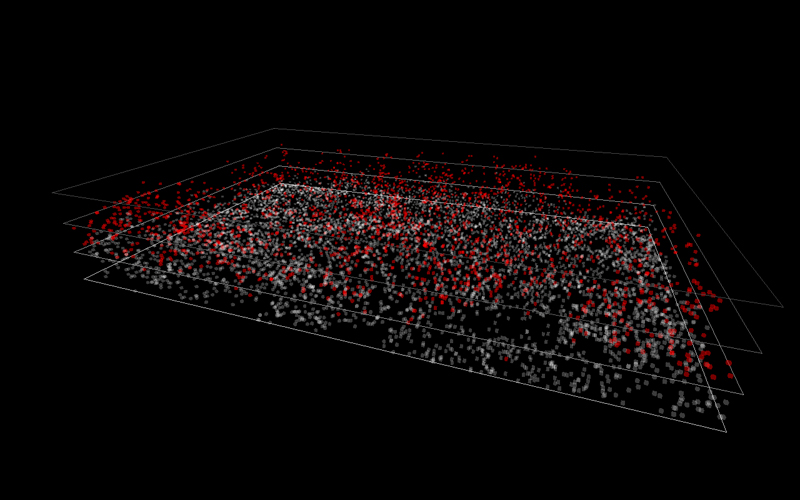
2011. City of Rome, during a research in winter 2011. The image represents a screen capture of a visualization of the messages of
citizens of the city of Rome using social networks to discuss the financial crisis in Italy. Red colored dots represent expressions
of particular verbal violence. Courtesy of Art is Open Source.
LEA Volume 19 Issue 1
Volume Editors: Lanfranco Aceti and Richard Rinehart
Editors: Ozden Sahin, Jonathan Munro and Catherine M. Weir
ISBN: 978-1-906897-20-8
ISSN: 1071-4391
Connecticity, Augmented Perception of the City
+ Interview, Statement, Artwork
by Salvatore Iaconesi & Oriana Persico
We constantly re-interpret and transform the spaces around us.
The ways in which we constantly personalize the spaces which we traverse
and in which we perform our daily routines communicate information about
emotions, knowledge, skills, methodologies, cultures and desires.
This process takes place in digital realms as well, which start to ubiquitously
merge with cities.
Mobile devices, smartphones, wearables, digital tags, near field communication
devices, location based services and mixed/augmented reality have turned
the world into an essentially read/write, ubiquitous publishing surface.
The usage of mobile devices and ubiquitous technologies alters the understanding
of place.
In our research, we investigated the possibilities to conceptualize, design
and implement a series of usage scenarios, moving fluidly across arts, sciences
and the practices of city governance and community design.
The objective we set forth sees the creation of multiple, stratified narratives
onto the city, set in place by citizens, organizations and administrations.
These real-time stories and conversations can be captured and observed, to gain
insights on fundamental issues such as ecology, sustainability, mobility, energy,
politics, culture, creativity and participatory innovation processes.
These methodologies for real-time observation of cities help us take part
in a networked structure, shaped as a diffused expert system, capturing disseminated
intelligence to coagulate it into a framework for the real-time processing of
urban information.
Full article is available for download as a pdf here.
Volume 19 Issue 1 of Leonardo Electronic Almanac (LEA) is published online as a free PDF but will also be rolled out as Amazon Print on Demand and will be available on iTunes, iPad, Kindle and other e-publishing outlets.
